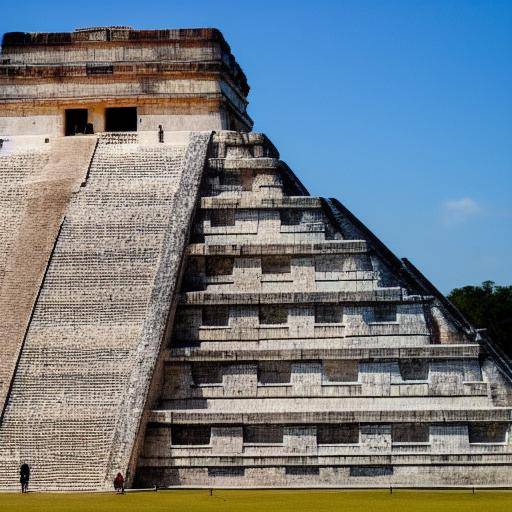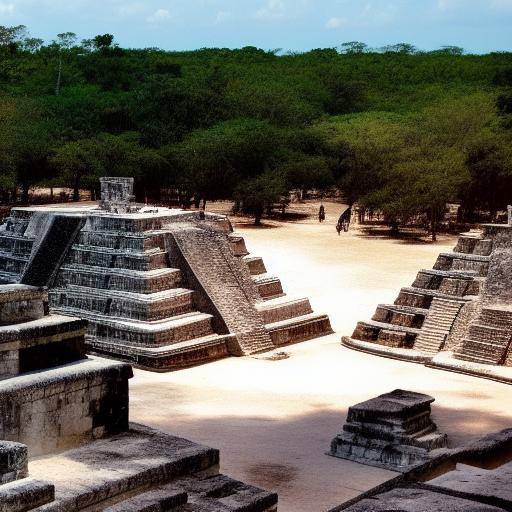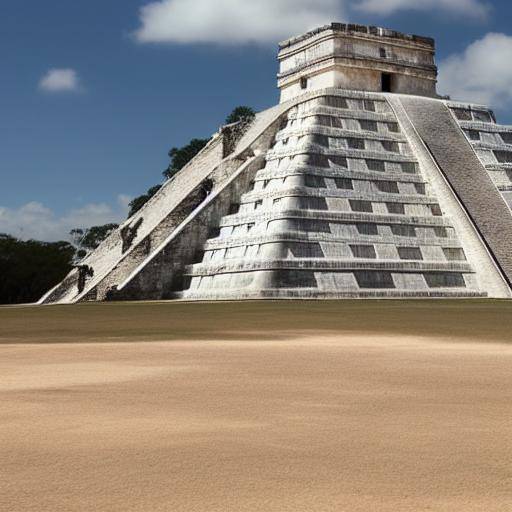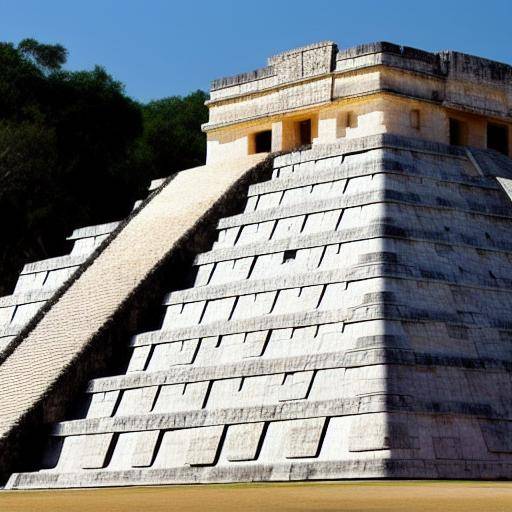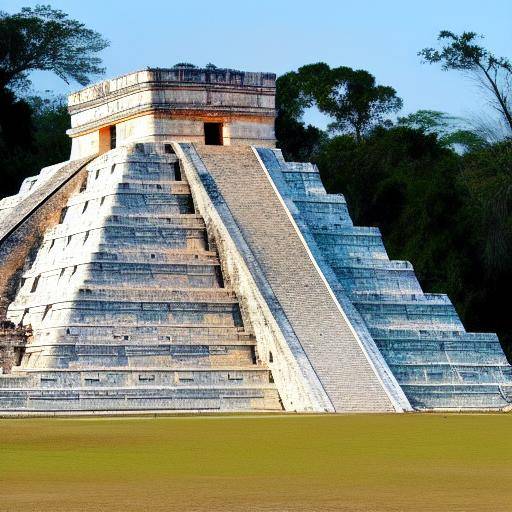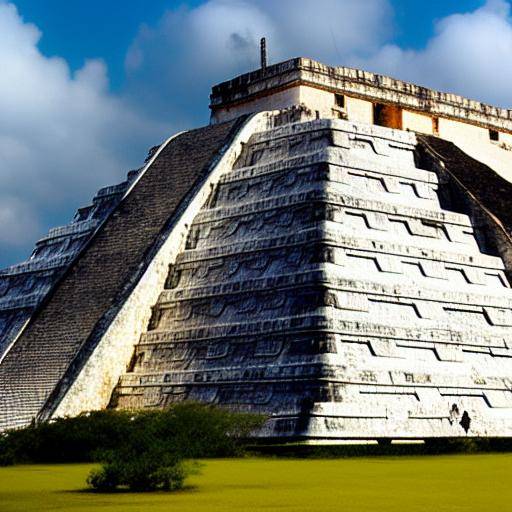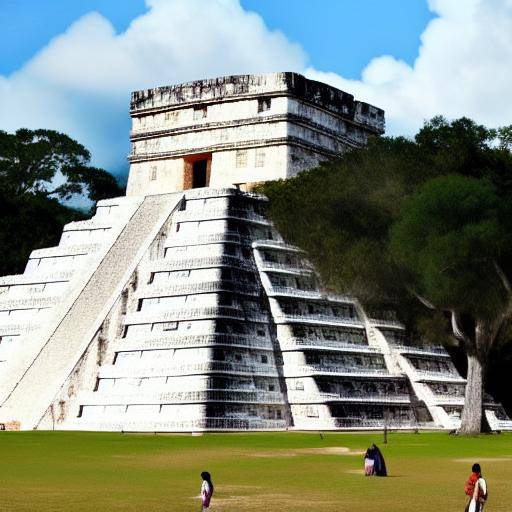
Welcome to the wonderful journey through Chichén Itzá, an archaeological site of incomparable relevance on the Yucatan peninsula! In this article, we will explore the Mayan ruins of Chichén Itzá, which represent a fascinating legacy of an ancient culture. Get ready to get into the rich history, the splendid architecture and mysteries that surround this exceptional site. We will discover the magic of this place, how it became one of the Seven Wonders of the Modern World and its relevance in Mayan culture.
Introduction
A view of Chichen Itzá and its Cultural Importance
Chichén Itzá, located on the Yucatan Peninsula in Mexico, is one of the most significant archaeological jewels in the world. This site, which once was a Mayan metropolis, offers us an amazing look at the beliefs, architecture, art and scientific development of this ancient civilization. Over the centuries, he has captivated archaeologists, historians and visitors from around the world due to his monumental cultural and historical importance.
What You Can Expect Discover
In this article, we will immerse ourselves in the history and meaning of Chichen Itzá, explore the Mayan ruins that make up it and deepen the influence of Mayan culture in the region of Yucatan. We will also address frequent questions about the visit to this archaeological site, giving you an integral perspective so that you can enjoy your experience in this emblematic place.
History and Background
Chichen Itza was founded around 525 AD for the Mayas and flourished until 1200 AD during the pre-Columbian period. This site was the epicenter of Mayan culture and highlighted by its monumental architecture, governance system, mathematical development and advanced astronomical knowledge. Chichen Itza became a crucial religious, political and commercial centre in the region.
The Splendor and the Fall of Chichen Itza
The splendour of Chichen Itza came to an end around 1250 AD, triggering a decline period and finally its abandonment. The reasons behind the decline of this ancient city still generate debate among academics, but it is believed that factors such as drought, internal conflicts and growing pressure from other civilizations contributed to their decline.
Deep analysis
Historic and Cultural Importance of Chichen Itzá
Chichen Itzá's legacy is invaluable in understanding the evolution of Mayan civilization. Its architectural structures, such as the Pyramid of Kukulcan, The Observatory and the Game of Pelota, provide a treasure of information about religious beliefs, astronomy and ceremonial activities of this ancient civilization.
Significado Actual y Relevancia de Chichen Itzá
Today, Chichen Itza is a living testimony of the creativity and knowledge of the ancient Mayas. Its designation as a World Heritage Site by UNESCO and its inclusion in the list of the Seven Wonders of the Modern World underscore its continuing relevance as an archaeological wonder that attracts travelers, archaeologists and historians from around the world.
Comprehensive review
The Importance of Maya Ruins in Yucatan
Chichen Itza along with other Mayan ruins in Yucatan, such as Uxmal and Tulum, are an extraordinary testimony of the greatness of Mayan civilization. These ruins reveal a wealth of knowledge in architecture, art, hieroglyphic writing, mathematics and astronomy, which contributes significantly to the understanding of the history and culture of this civilization.
Comparative analysis
Chichén Itzá vs. Other Maya Ruins: Similarities and Differences
In comparison, Chichén Itzá stands out for its monumentality and cultural syncretism reflected in its architecture. On the other hand, places like Tulum are distinguished by its coastal location and Uxmal due to its architectural complexity. Each site brings a unique perspective of Mayan civilization, enriching the understanding of its legacy.
Practical Tips and Accessible Recommendations
Getting ready for your visit to Chichén Itzá
When planning your visit to Chichén Itzá, make sure you have sun protection, comfortable footwear and water. In addition, consider a guided tour to gain a deeper understanding of the history and architecture of this site. As you explore the ruins, take the time to appreciate the architectural details that reveal the accuracy and beauty of Mayan culture.
Ideas and Sector Reviews
Perspectives of Experts on Archaeology and Mayan Culture
Distinguished archaeologists and experts in Mayan culture share their vision of the importance of preserving and understanding archaeological sites such as Chichen Itza. According to them, these ruins provide valuable knowledge of the social, religious and cultural evolution of Mayan civilization, which influences our understanding of the past and its lasting legacy in the present.
Case Studies and Practical Applications
Contemporary Meaning of Chichen Itza
Sustainable tourism and responsible management of archaeological sites, such as Chichén Itzá, are essential for preserving their integrity and cultural value. Case studies present successful initiatives that balance conservation with tourism, ensuring that future generations can enjoy and learn from these historical wonders.
Future Trends and Predictions
The Future of the Preservation of Maya Ruins
Continuous efforts to safeguard the Mayan ruins, including innovative conservation technologies and educational programs, reflect a global commitment to the preservation of this invaluable heritage. Predicting their future implies recognizing the need for a careful balance between public access and the protection of these cultural treasures.
Conclusion
In conclusion, Chichén Itzá is much more than a set of ancestral ruins. It represents a tangible link with the past, a window to a civilization that flourished with wisdom and grandeur. As we explore these archaeological treasures, we face to face with an eternal legacy that transcends time and invites us to appreciate the very essence of humanity.
To further explore the intriguing world of Chichén Itzá, we invite you to consult our FAQs below.
Frequently asked questions
What is the best time of the year to visit Chichen Itzá?
The best time to visit Chichen Itzá is during the low season, which usually occurs between May and November, thus avoiding crowds and intense heat. However, if you want to witness the phenomenon of light and shadow in the Kukulcan Pyramid, consider visiting the spring or autumn equinox.
Are the ruins of Chichén Itzá accessible to people with disabilities?
Yes, the site has infrastructure for people with disabilities, including ramps and other accessibility elements. However, it is advisable to consult directly with the site to obtain detailed information about available facilities.
What measures are being taken to preserve Chichén Itzá and other Mayan ruins?
Local and international organizations work closely to implement sustainable tourism conservation, education and management programmes. These initiatives seek to balance the preservation of the ruins with the experience of the visitor, through measures such as the limitation of access to certain structures and the implementation of technologies respectful with archaeological integrity.
What other Mayan ruins near Chichen Itza should visit?
In addition to Chichén Itzá, we recommend exploring Tulum, known for its location next to the Caribbean Sea, and Uxmal, which offers magnificent examples of Mayan architecture. Each site offers a unique and complementary perspective of the rich Mayan history and culture.
How long do you need to fully explore Chichen Itzá?
To explore Chichén Itzá thoroughly and appreciate its most outstanding structures, it is recommended to book at least half a day. However, the time spent on the visit may vary according to personal interest in archaeology, history and Mayan culture.
What are the restrictions and policies related to the visit to Chichén Itzá?
In order to preserve the integrity of Chichén Itzá, restrictions apply in terms of access and manipulation of the structures. Also, be sure to respect local regulations, such as not leaving trash, not climbing archaeological structures and not disrupting the wildlife that inhabits the area.
Is it safe to visit Chichén Itzá and its surroundings?
Chichen Itzá and its surroundings are considered safe for visitors. However, as in any tourist destination, it is important to maintain the usual precaution and follow the safety and health recommendations issued by local authorities and tourist guides.
What aspects of Mayan culture can be seen during the visit to Chichén Itzá?
During your visit to Chichén Itzá, you will have the opportunity to appreciate various aspects of Mayan culture, ranging from monumental architecture to artistic manifestations in relief and mural painting. In addition, you can understand the importance of astronomy and religion in the daily and ceremonial life of this ancient civilization.
We hope that these frequent questions have enriched your understanding of Chichen Itza's magnificence and the Mayan ruins in Yucatan! We invite you to continue exploring this fascinating theme and immerse yourself in one of the most striking cultural legacy of humanity.

